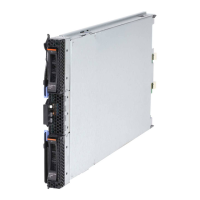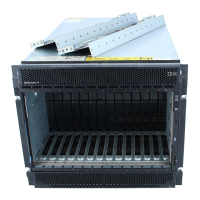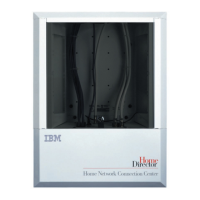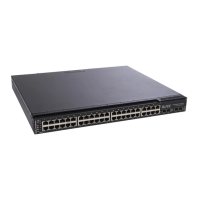to the VLAN. Otherwise, check Egress to statically set a port to belong to a VLAN,
or Forbidden to prevent a port from being a member of the VLAN. Click Apply to
make the changes effective.
802.1Q VLANs Entry Settings -- Edit
Complete the following steps to display the 802.1Q VLANs Entry Settings -- Edit
window:
1. Select VLANs from the Configuration menu (see “Configuration” on page 34).
2. Select Edit 802.1Q VLANs from the VLANs menu.
3. Click Edit on the Edit 802.1Q VLANs window.
The 802.1Q VLANs Entry Settings -- Edit window opens.
To modify an entry, complete the appropriate information on the window, and then
click Apply.
The information on this window is described as follows:
VLAN ID (VID)
The VLAN ID of the VLAN that is being created.
VLAN Name
The name of the VLAN that is being created.
Tag Specifies the port as either 802.1Q tagging or 802.1Q untagging. Checking
the box will designate the port as Tagging.
None Specifies the port as not being a static member of the VLAN, but with no
restrictions for joining the VLAN dynamically through GVRP.
Egress
Specifies the port as being a static member of the VLAN. Egress Member
Ports are ports that will be transmitting traffic for the VLAN.
Forbidden
Specifies the port that is not permitted to be a member of the VLAN.
Port VLAN ID (PVID)
Complete the following steps to display the Port VLAN ID (PVID) window:
1. Select VLANs from the Configuration menu (see “Configuration” on page 34).
2. Select 802.1Q Port Settings from the VLANs menu.
3. Select Port VLAN ID (PVID) from the 802.1Q Port Settings window.
A window similar to the following opens:
42 IBM BladeCenter 4-Port Gb Ethernet Switch Module: Installation and User’s Guide
